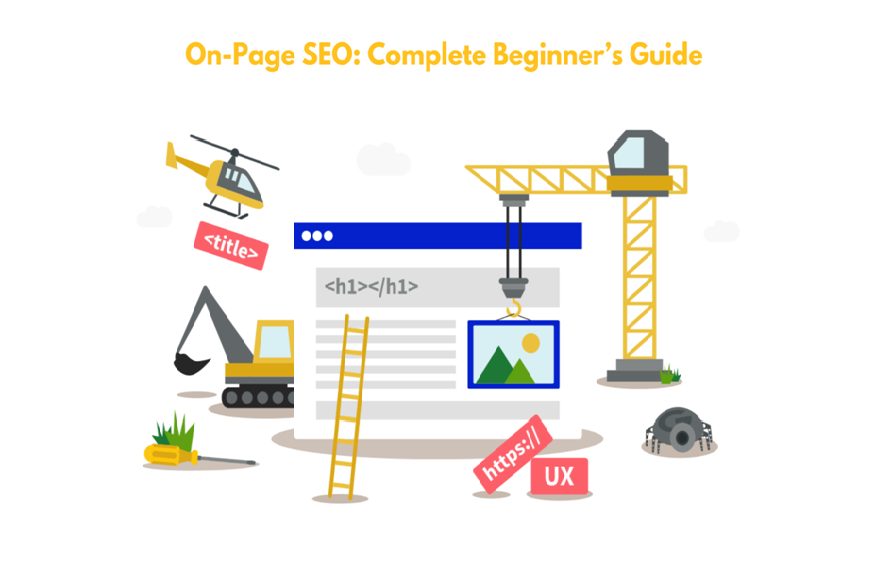On-Page SEO: Complete Beginner’s Guide

After comprehensively understanding the varying patterns of the target market searches, it is time to splurge into the basics of On-page SEO as per SEO Sydney. On-page SEO is primarily the practice of meticulously crafting web pages that answer the searcher’s questions. It is smartly using your research to craft your desired message. On-page SEO has multifaceted parameters. Its boundaries extend beyond the content into other aspects such as schema and meta tags, which can be better understood when the term technical optimisation becomes clear. For now, it is necessary to add your wordsmithing hats which means that it is the perfect timing to create your content, as emphasised by Sydney Digital Marketing Agency.
Content Creation with the apt application of keyword research:
Before understanding this concept, it is necessary to learn methods for identifying how your target audience is searching for your content. Now it is the ideal timing to apply those research fundamentals into real and actual practice. This blog post presents a simple layout and highlights to adhere to smartly using your keyword research:
1) Monitor your keywords and segregate as well as group them with similar topics and intent. Those groups would become your pages instead of creating individual pages for every keyword variation.
2) If you have not executed or implemented so far, assess, and evaluate the SERP for each keyword or group of keywords to ascertain what sort and format pattern your content must be adhering to in the proper context. Some peculiar features of ranking to consider in mind are:
- a) Our keyword rankings image or video heavy?
- b) Whether the content is long-form or short, or concise?
- c) Whether the content is formatted in lists, bullets, or paragraphs?
3) Question yourself, “What peculiar value could you offer to make your page better than the pages that are presently ranking for your keyword?
On-Page SEO permits you to move your research into content that your audience would adore and admire. You need to ensure to prevent getting into the trap of low-value tactics that could hurt more than assist you.
Prevention of Low-value Tactics:
According to SEO Sydney, your web content must be ready and prevalent to answer searcher’s questions, assist them through your website, and help them comprehend the sole purpose of your website. Content must not be generated or produced to rank highly in search on a standalone basis. The ranking is a means to an end, the end being to assist searchers. If you primarily suspend the cart before the horse, you get at the risk of getting into the trap of low-value content tactics.
This blog post takes you on a deeper dive. It plunges into somewhat low-value tactics that you need to prevent while crafting search engine optimised content as advocated by Sydney Digital Marketing Agency.
1) Thin Content:
While it is quite common for a website to possess unique pages on varying topics. An older content strategy would be to create a page for every single iteration of your keywords to rank on the first and foremost page for those high-end specific queries.
For instance, if you intend to sell bridal dresses, you might have created individual pages for bridal gowns, bridal dresses, wedding gowns, and wedding dresses, even if each page was primarily implying the same aspect and meaning. A similar tactic for local businesses was to create multiple pages of content for each city or region from where they wanted to procure clients. These “geo pages” quite frequently had the same or very identical content, with the embedded location name being the unique parameter.
Tactics like these were not of any assistance to users, so why did publishers adopt them? Google was not always as proficient as today in the present scenario in comprehending the relationships between random words and phrases or semantics. So, if you desired to rank on the first page for “bridal gowns”, but you only were equipped with a page on “wedding dresses”, that would not have served it.
This low-value tactic invented umpteen numbers of thin, low-quality content across the web, which Google termed as Panda, especially with its 2011 update. This algorithm update of Google penalised low-quality pages, which had resulted in more quality pages taking the top spots of the SERPs. Google constantly continues to recapitulate on this process of demoting low-quality content and promoting high-end premium quality content in the present scenario.
Google is clear and precise that you must be equipped with a comprehensive page on a topic rather than possessing a multitude of weaker pages just for procuring each variation of a keyword.
2) Duplicate Content:
As it sounds, duplicate content implies content shared between domains or between a multitude of pages of a single domain. “Scraped” Content moves a step further and involves the deliberate and unauthorised use of content from other websites. This aspect can incorporate taking content and republishing in the same form or altering it slightly before republishing without complementing any original content or enhanced value. There are a plethora of legitimate causes for internal or cross-domain duplicate content, so Google proposes and stimulates the deployment of a rel canonical tag to state out to the original version of the web content. While you are not required to understand and realise this tag just yet, the main fundamental aspect of being observed is that your content must be unique in word and value.
3) Cloaking:
An essential preliminary theory of search engine guidelines is to portray the same content to the engine’s crawlers that you would display to a human visitor. This aspect implies that you need not hide text in the HTML code of your website that a normal visitor cannot observe. When this guideline and protocol is broken, search engines term its “cloaking” and take necessary action to avoid these pages from ranking in search results. Cloaking can be accomplished in several ways and for various reasons, both optimistic and pessimistic.
Conclusion:
Thus, as per the metrics of SEO Sydney, On-Page SEO is crucial and significant as it assists search engines in comprehending your website in a better possible manner. And its content, as well as ascertain whether it is relevant to oblige to a searcher’s query as proposed by Sydney Digital Marketing Agency.






